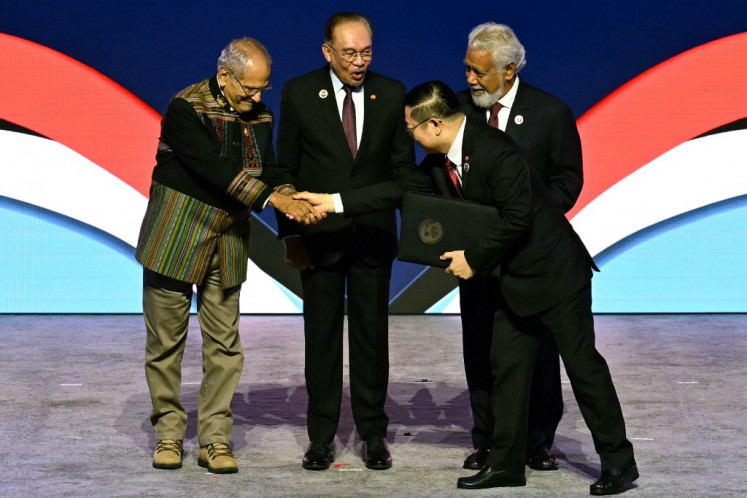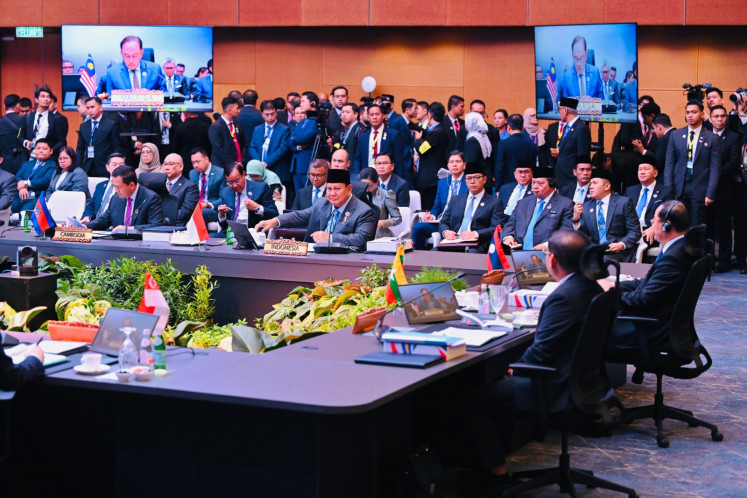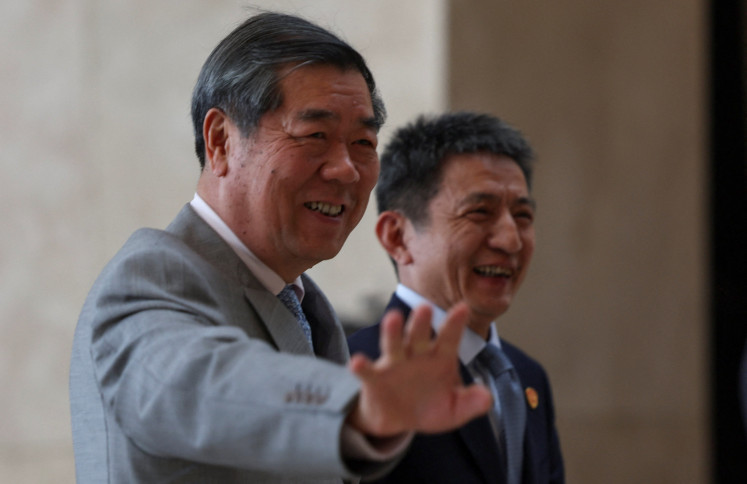Popular Reads
Top Results
Can't find what you're looking for?
View all search resultsPopular Reads
Top Results
Can't find what you're looking for?
View all search resultsIndonesia's Gini ratio advances to 0.4
Indonesia's Gini coefficient ratio improved by 0.01 to 0.4 in September 2015. The Gini ratio is an indicator measuring income-distribution inequality. A coefficient of zero expresses perfect equality, while one (100 percent) implies maximal inequality.
Change text size
Gift Premium Articles
to Anyone
Indonesia's Gini coefficient ratio improved by 0.01 to 0.4 in September 2015.
The Gini ratio is an indicator measuring income-distribution inequality. A coefficient of zero expresses perfect equality, while one (100 percent) implies maximal inequality.
The Central Statistics Agency (BPS) head Suryamin said the country's Gini ratio stood at 0.38 on March 2010, slipped to 0.39 in September 2010, and further deteriorated to 0.41 in March 2011. It stagnated at that level until March 2015.
"This means there's an improvement in income-distribution equality," Suryamin said at a press conference held in Jakarta on Monday.
Several factors, he said, contributed to the improvement including wage increases in the agricultural and construction sectors. Average agricultural wages increased from Rp 46,180 (US$3.50) per day in March 2015 to Rp 46,739 in September 2015.
"Likewise, construction workers wages grew 1.05 percent from Rp 79,657 in March 2015 to Rp 80,494 per day in September 2015," Suryamin went on.
An increase in the number of informal workers in the agricultural and construction sectors helped improve the Gini ratio, he said. Based on the national labor force survey (SUSENAS), the number of informal workers in the two sectors rose from 11.9 million in Feb. 2015 to 12.5 million in Aug. 2015.
In addition, low-income expenditure increased more quickly than among people on high incomes, according to the survey.
"The increase in expenditure cannot be separated from the government's efforts to boost infrastructure, which has effectively absorbed lower-income workers into the highways and ports projects," Suryamin explained.
He added that the percentage of the urban population stood at 52.55 percent in March 2015 and increased to 53.19 percent in Sept. 2015.
The government aims to improve the Gini ratio, from 0.41 to 0.39 in 2016, which is too ambitious according to International NGO Forum on Indonesian Development (INFID) program manager Siti Khoirun Ni'mah.
She pointed out that Brazil took 15 years to lower its Gini ratio from 0.59 to 0.54. According to her, the main problem with inequality in Indonesia is the high number of people with a limited education. (ags)










